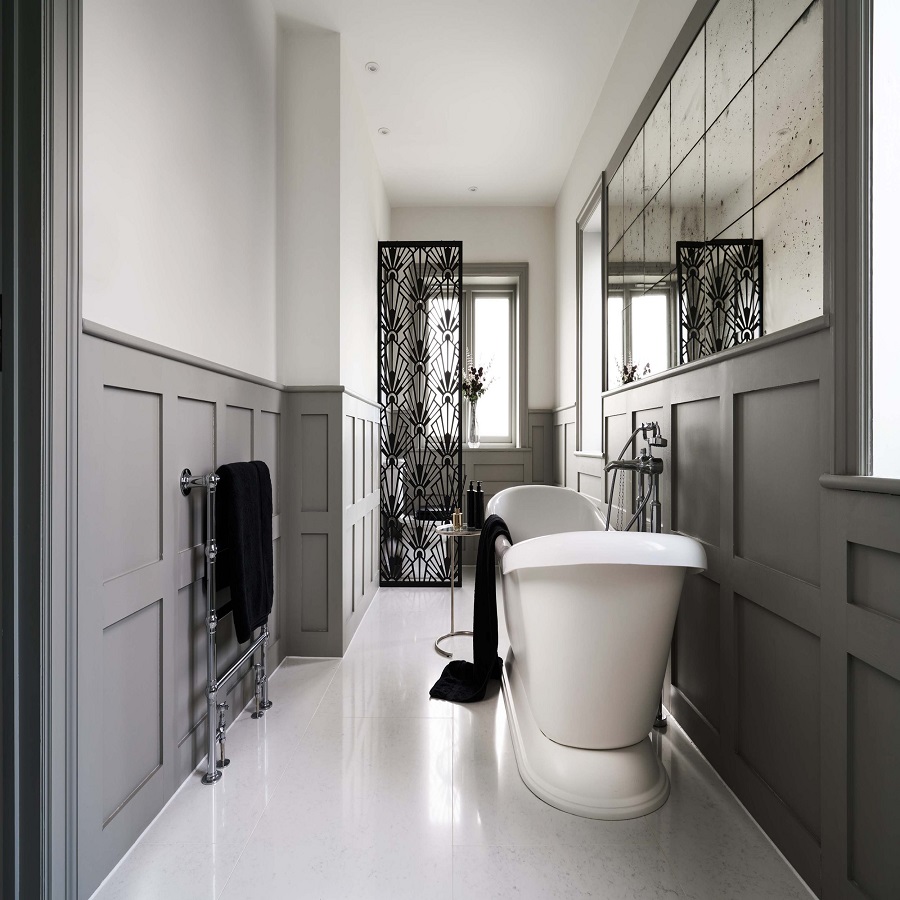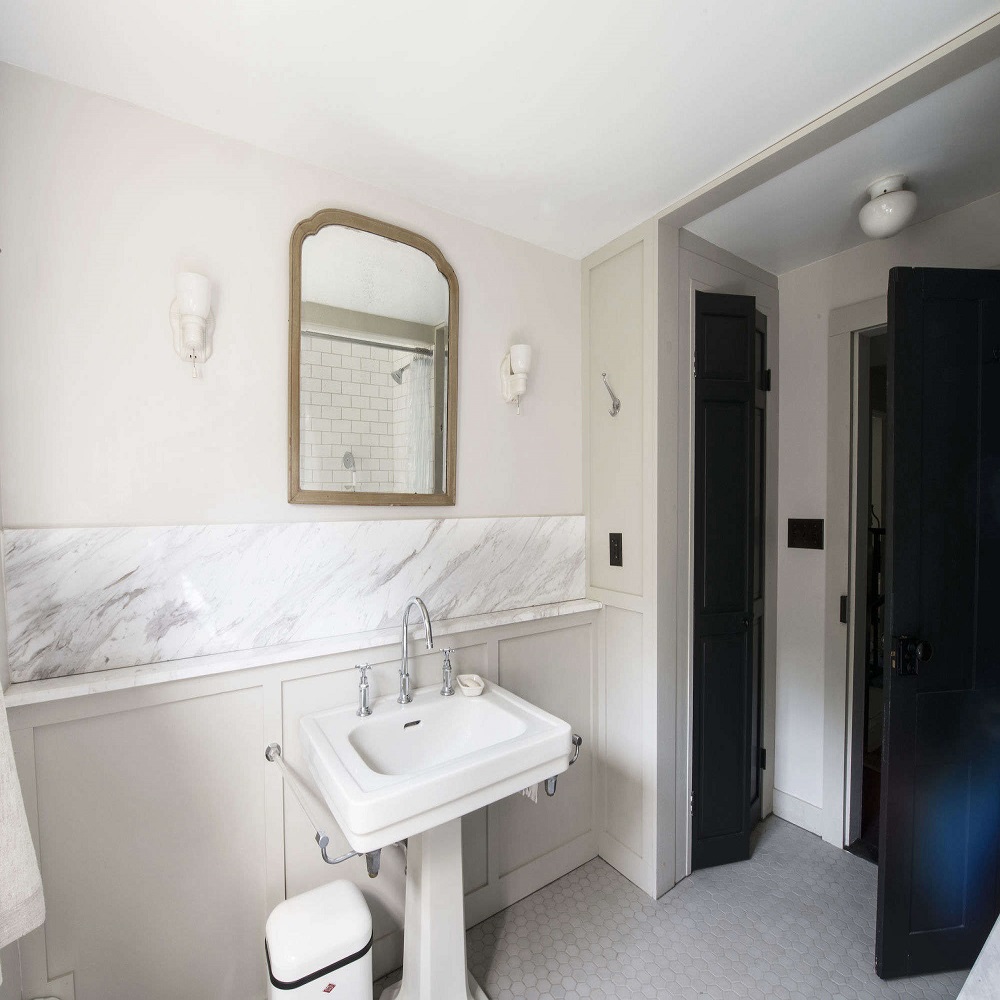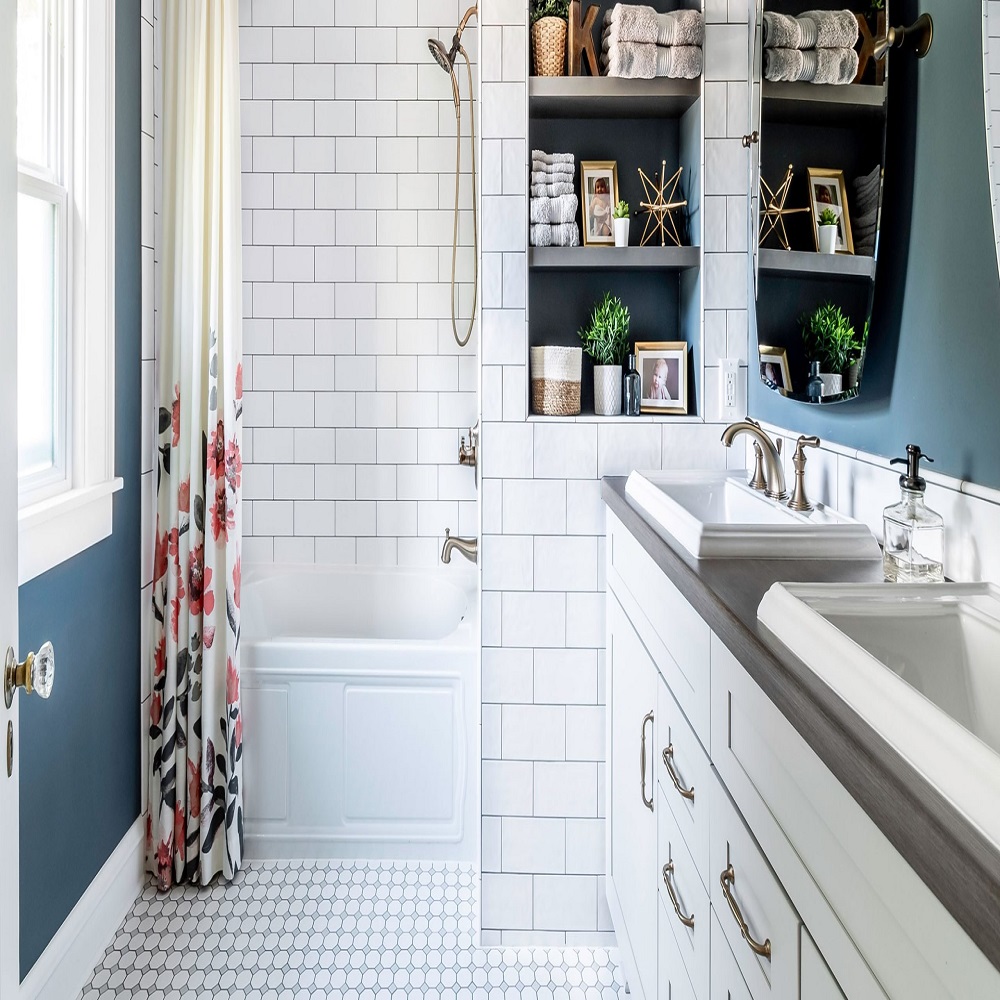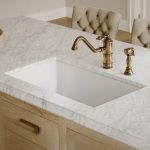The Influence of Art Deco on 1920s Bathroom Aesthetics
The 1920s bathroom aesthetics were heavily influenced by the Art Deco movement. This style brought bold geometric patterns to the forefront of design. Intricate mosaic tiles became a staple in these spaces, covering floors and walls. They featured bold colors, often in stark contrasts, to create a dramatic look. Such design choices turned ordinary bathrooms into works of art.
Art Deco’s emphasis on modern luxury marked every aspect of bathroom design. It was a time when attention to detail was paramount. The movement saw the integration of sumptuous materials that added a touch of opulence. Porcelain and chrome, for instance, were used for fixtures and shone brightly in many a 1920s bathroom. The grandeur of marble also played a key role, offering a timeless elegance still admired today.
Overall, Art Deco endowed 1920s bathroom aesthetics with a distinct character. It was a blend of modernity, luxury, and artistic expression that still captivates enthusiasts of historical design. These bathrooms were a celebration of progress and refinement, a sentiment deeply rooted in the era.

Signature Materials of the 1920s: Porcelain, Chrome, and Marble
In the 1920s, bathroom design reached new heights of luxury and sophistication. Porcelain, chrome, and marble emerged as signature materials that exemplified the era’s attention to detail and elegance.
Porcelain became a popular choice due to its glossy finish and durability. It was often used for sinks and bathtubs, showcasing a clean, bright aesthetic that reflected the era’s penchant for modernity and cleanliness.
Chrome also became widespread in the 1920s. It was primarily used for fixtures like taps and showerheads. The shiny, reflective surface of chrome fittings added a touch of modern sparkle and hygienic appeal, aligning perfectly with the Art Deco movement’s love for sleek, streamlined designs.
Finally, marble added an unparalleled touch of luxury. Commonly used for countertops and flooring, this material brought a stately and grandiose element to the bathroom environment. Its natural patterns and cool surface embodied the period’s love for grandeur and timeless elegance.
Together, these materials helped shape the distinctive and opulent aesthetics of 1920s bathrooms, leaving a lasting legacy in the world of interior design.
The Hollywood Impact on Bathroom Luxury and Glamour
The 1920s saw bathrooms evolve into lavish spaces, reminiscent of Hollywood’s sparkle. With the film industry booming, opulence was the trend; bathrooms were not simply for basic needs but became sanctuaries of extravagance. Through cinematic inspiration, bathrooms featured glamorous vanity mirrors, framed with Art Deco motifs. These mirrors reflected more than just an image. They represented a lifestyle of sophistication and grandeur, a connection to the stars of the silver screen.
Imitating soft, studio lighting, 1920s bathroom illumination set a scene of comfort and allure. It wasn’t just practical; it was about the mood, similar to the backlit glamor seen in movies. This lighting transformed the bathroom from a functional space into an intimate stage for personal care rituals.
In every detail, from towel racks to soap dishes, the Hollywood effect was palpable. The 1920s bathroom became a place to dwell in luxury, taking cues from movie palace designs and the ritzy homes of film icons. These elements of luxury and glamour have left a lasting impression, maintaining their appeal even today. The association with Hollywood and its stars made the 1920s bathroom a cherished emblem of elegance and sophistication, now reflective in design history.

Functional Sophistication: Modernist Movement’s Contribution
The 1920s bathroom designs were also influenced by the Modernist movement. This movement prioritized function and simplicity. It introduced clean lines and a no-fuss approach to design.
Space-Saving Fixtures
Wall-mounted sinks were a hallmark of Modernist design. They maximized space and offered a sleek look. Built-in storage solutions were another feature. These helped to keep the bathroom tidy and efficient.
Efficiency in Design
The movement brought forward designs that made everyday use more practical. It valued the efficiency and practicality needed in urban living spaces.
Embracing Minimalism
In contrast to Art Deco’s drama, Modernism embraced minimalism. It stripped back excess to leave only what was functional. Yet, the design remained sophisticated and beautiful.
Lasting Impact
These contributions from Modernism to the 1920s bathroom have a lasting impact. They made bathrooms more user-friendly and aesthetically versatile even today.
Evolving Bathroom Features: From Floor Tiles to Lighting Fixtures
As the 1920s saw remarkable progress in interior design, bathroom features evolved significantly. Two of the most defining aspects of this evolution were the intricate floor tiles and the innovative lighting fixtures that characterized the period.
Intricate Floor Tiles
The Art Deco influence ushered in the use of complex mosaic tile patterns underfoot. Bold black and white combinations were popular, as well as tiles with metallic accents. These weren’t merely functional; they were designed to make a statement, turning the floor into a central aesthetic feature of the 1920s bathroom.
Innovative Lighting Fixtures
Lighting took on a new level of importance with the introduction of softer, warmer bulbs that mimicked the glamour of Hollywood. Sconces on either side of vanity mirrors provided flattering light, essential for the grooming rituals of the time. Overhead lighting also became a design element, often featuring geometric patterns that matched other Art Deco details.
Together, these features heightened the room’s ambiance. Their evolution was more than just aesthetic; they served to enhance the user’s experience, making the bathroom a showcase of both form and function. In essence, they were the touchstones of the luxury and modernity that 1920s bathroom design symbolized.

The Role of Advanced Manufacturing in Bathroom Design Evolution
The 1920s bathroom landscape witnessed significant transformation due to advancements in manufacturing. These advancements were pivotal in evolving the design and production of bathroom fixtures and materials, contributing greatly to the era’s iconic aesthetic. The evolution of manufacturing techniques meant that high-quality materials like porcelain, chrome, and marble could be produced with greater precision and at a higher volume, making them more accessible to consumers.
New manufacturing processes allowed for the creation of porcelain and chrome pieces with intricate designs that were previously not possible or too costly. This resulted in finer, more detailed fixtures that became a hallmark of the time. Bathrooms, therefore, emerged not just as functional spaces but as showcases for craftsmanship and innovation.
Moreover, the mass production of tiles made intricate mosaic floors more commonplace in homes, as they became less expensive and easier to install. These tiles added a flair of sophistication to the bathrooms, further embracing the Art Deco influence.
This era also saw the introduction of built-in features, such as cabinetry and closets, as manufacturing allowed for better integration of multiple materials and more complex designs. This bespoke approach married beauty with practicality, illustrating the technological strides in construction techniques.
In summary, advanced manufacturing played a key role in the bathroom design evolution during the 1920s by enhancing material quality, design intricacy, and accessibility. These advancements left a durable legacy, shaping not only the bathrooms of the time but also influencing modern bathroom designs.
Preserving the Legacy: Historical Significance of 1920s Bathrooms
The 1920s bathrooms hold a distinct place in design history. Innovative, luxurious, and uniquely beautiful, these spaces reflected societal changes and technological advancements of the era. Their historical significance is immense, offering a lens through which we can view past aesthetics and cultural paradigms.
Reflecting cultural tastes and technological advancements of the time, 1920s bathrooms showcased luxury and innovation. Often seen as more than just functional spaces, they served as a canvas for the prevailing artistic and cultural movements. Art Deco’s influence, with its geometric patterns and bold contrasts, left a resounding impact on their design, turning these private spaces into works of art.
Moreover, the influence of Hollywood glamor during the 1920s brought about a transformation in ordinary bathrooms. They moved beyond utilitarian uses, evolving into lavish retreats that mirrored the opulence seen in cinemas. This adoption of luxury made them a symbol of sophistication and societal progress, reflections of a burgeoning cultural obsession with stardom and spectacle.
Technologically, the evolution of manufacturing allowed for high-quality materials to be more accessible. Porcelain and chrome not only enhanced the visual appeal but also represented the era’s stride towards innovation. As a result, 1920s bathrooms stand today not just as remnants of the past, but as showcases of historical progression and timeless design.
Preserving these historical artifacts is essential, not just for aesthetic appreciation but for understanding the era’s broader historical context. Each tile, fixture, and layout serves as a narrative piece, telling stories of a past that embraced both grandeur and functionality with equal fervor. The legacy of 1920s bathrooms continues to influence modern interior design, reminding us of a time when design first ventured into combining utility with extravagant luxury.


